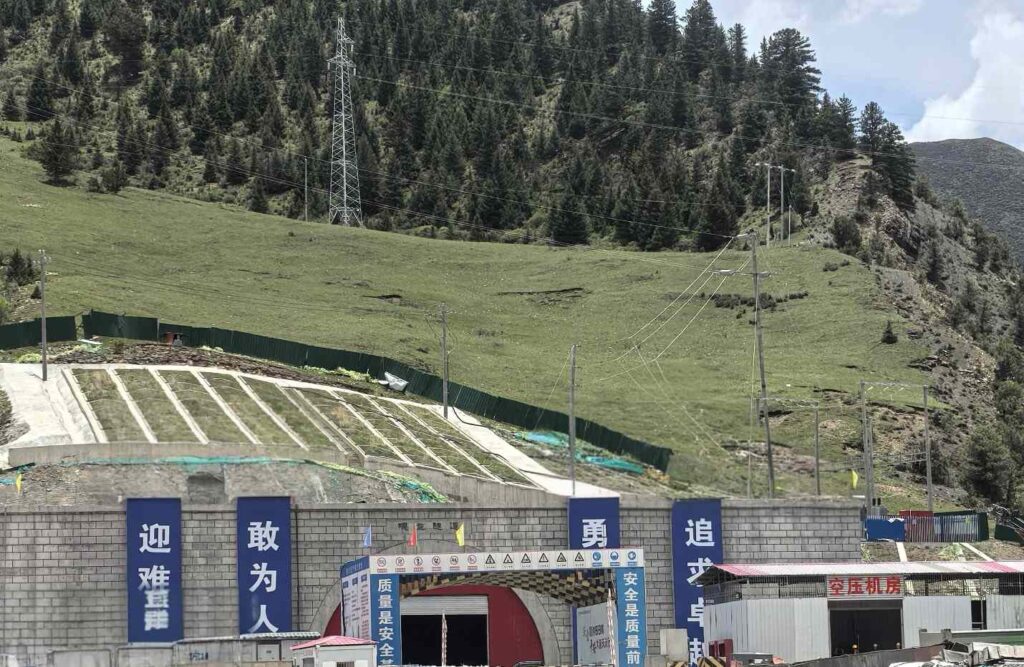If you’re tired of digging holes, pouring concrete, and waiting days for it to set, you’re not alone. That’s where ground screw anchors come in. These useful tools make building foundations quicker, cleaner, and way more long-lasting. Whether you’re putting up a fence, mounting solar panels, or setting up a garden shed, these anchors get the job done fast and hold strong.
In this blog, we’ll walk you through how ground screw anchors work and why so many construction pros, landscapers, and even DIYers are switching to it—especially with reliable options from ONTON Technology’s self-drilling anchor systems.

What Is a Ground Screw Anchor?
A ground screw anchor is a foundation and anchoring device designed to be driven directly into the ground, in order to provide a sturdy and reliable base for various structures. Instead of traditional concrete footings or deep excavation, these anchors make use of a helical screw or threaded shaft that is rotated into the soil. Constructed primarily from steel, ground screw anchors are often coated with corrosion-resistant materials like galvanized zinc or other protective layers to withstand environmental conditions.
The core structure of a typical ground screw anchor usually includes a central shaft that features a helical plate or blade at the bottom. This helix acts like a screw thread, allowing the device to cut into and grip the soil as it is rotated. The top of the anchor usually has a loop, eye, or threaded head to attach the structure or load-bearing component. Common applications for ground screw anchors include supporting decks, fencing, solar panel mounts, signage, temporary event structures, and even small-scale building foundations.
Their versatile and durable design makes them useful for different soil types, from soft clay to rocky terrain.
How Ground Screw Anchors Work(How To Install)
The magic behind a ground screw anchor lies in its self-drilling capability and solid interaction with the soil. The installation process is straightforward, efficient, and environmentally friendly, which makes it popular across different sectors.
Step 1: Site Preparation
First, identify the location where the anchor will be installed. Clear the area of debris, rocks, or vegetation that could interfere with the installation. Unlike traditional foundations, there’s no need for extensive excavation or concrete pouring.
Step 2: Position the Anchor
Place the ground screw anchor vertically at the designated spot. Many anchors come with a built-in drilling tip, so you can start turning the screw directly into the ground.
Step 3: Installing the Anchor
Using a hydraulic driver, manual wrench, or a special installation tool, rotate the anchor clockwise. The helical blade bites into the soil, gradually screwing the device deeper. The self-drilling design means no pre-drilling or pilot holes are required, which saves you time and effort.
Step 4: Achieving the Desired Depth
Continue rotating until the anchor reaches the necessary depth for your project. The screw’s helical design ensures a tight grip in the soil, providing stability for the structure.
Step 5: Attaching the Load
Once embedded, attach your structural element to the anchor’s top loop or threaded connection point. Ensure all fittings are secure and double-checked for safety.
The interaction between the helix and the soil creates a strong load-bearing capacity, especially when installed correctly. This design ensures that the screw distributes the load evenly and resists pulling forces, making it an excellent choice for various structural supports.

Why Use Ground Screw Anchors
There are many compelling reasons to opt for ground screw anchors over traditional methods. Their ease of installation and minimal site disturbance have made them a favorite among professionals and DIY enthusiasts alike.
- Fast and easy installation
Unlike pouring concrete, which can take days to cure and requires extensive labor, ground screw anchors can often be installed in minutes. The self-drilling feature removes the need for pre-drilling or excavation, enabling faster project completion.
- Minimal site disruption
With no need for heavy machinery or large excavation areas, these anchors cause less disturbance to the environment. They are especially suitable for urban, landscaped, or sensitive sites where preserving the surrounding area is crucial.
- Versatility across different soil types and projects
Ground screw anchors work well in a range of soil conditions, including sandy, loamy, clay, or rocky terrains. Their adaptability makes them ideal for a wide array of applications, from small DIY projects to large commercial developments.
What Makes Us Stand Out?
At ONTON Technology Co., Ltd, we pride ourselves on providing reliable, high-quality ground screw anchors that meet the demands of modern construction and landscaping projects. Our innovative self-drilling systems are engineered for ease of use, durability, and strength.
Our product range includes a variety of solutions suited to different needs. For instance, the Built-in Resin Prestressed Self Drilling Hollow Bolt features an integrated resin system that enhances load capacity and stability. Meanwhile, our T-thread self-drilling hollow bar offers superior torsional strength and supports several challenging projects.
All our products are manufactured with the highest standards, using premium steel and advanced coating technologies to resist corrosion and extend lifespan. Whether you are installing a small fence or supporting a large solar array, ONTON Technology’s ground screw anchors are designed to deliver consistent performance and peace of mind.
Choose ONTON Technology today for innovative, dependable solutions that stand the test of time.





